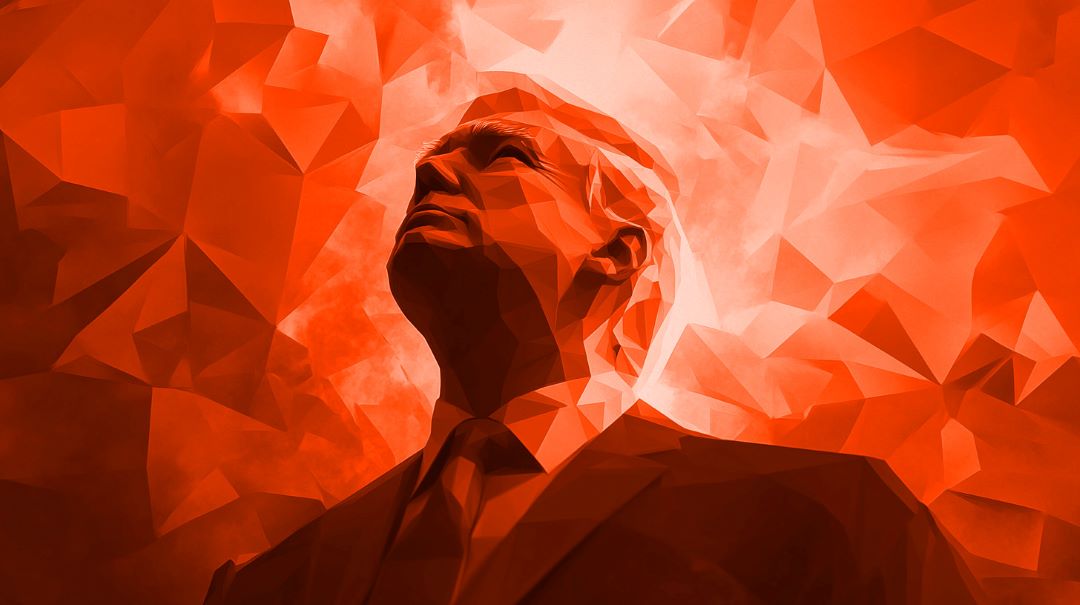Welcome to our weekly news post, a combination of thematic insights from the founders at ExoBrain, and a broader news roundup from our AI platform Exo…
Themes this week

JOEL
This week, in a post-US election special, we look at:
- The potentially catastrophic impact of Trump’s trade and foreign policy on American AI supremacy.
- How Trump plus AI could shape political norms, discourse and governance.
- Eight key domains where AI policy might shift under the new US administration.
Trump 2.0 risks American AI dominance
Donald Trump is back and following a crushing victory on Tuesday, the focus is now switching to understanding how an emboldened POTUS47 will govern, and which of the themes of his campaign he will prioritise. Tackling immigration, eliminating inflation, cutting tax, imposing tariffs, slashing regulation, radical health reform, ending various wars (and any investigations into his own dealings), and out-manoeuvring China, are all on his to-do list. But as is ever the case with Trump, these goals, and the band of radicals, conservatives, and now tech-oligarchs, form a complex mix of contradictions.
There are three elements to the Trump 2.0 agenda that have the most significant implications for AI: Tariffs, tech sovereignty, and Taiwan. Modern data centres, advanced semiconductors, and the vast computational power they provide have been the key unlock for AI in recent years and their rapid deployment across the globe will be the driving force behind economic, scientific and military progress in the coming years. Whilst Trump, Vance and Project 2025 have talked of “significant AI initiatives”, rolling-back the Biden executive order, and accelerating government adoption of AI, other populist policy making and ingrained ideas don’t bode so well for AI progress.
Kim Darroch, former British Ambassador to the US commented on an election night live stream that Trump has had very set views on the US role in the world and specifically on international trade since the 1980s when his focus was on Japan’s growing dominance (and he’s a very hard person to persuade). Trump is an avowed protectionist and throughout the campaign he spoke glowingly of the power of levying tariffs on imports to the US from not just China, but across the board.
While tariffs are presented as tools to restore American manufacturing jobs for the MAGA base, their economic impact will likely prove counterproductive. The proposed 10-20% blanket tariffs, combined with 60% duties on Chinese goods, would significantly increase the cost of critical compute infrastructure. The resulting dollar appreciation would partially offset these effects but create new problems – making US exports less competitive and undermining outside investment in re-shoring manufacturing capacity. A vast array of secondary data centre componentry comes from China, and as a result of existing tariffs, via ‘connector’ countries such as Mexico, another country Trump has in his sights. Trump’s pro-tariff stance is bolstered by one of his key advisors, and most effective operators from his first term, Bob Lighthizer who was instrumental in tough-talking trade negotiations with China (the kind of dealmaking beloved by Trump). But Lighthizer’s vision of strong-arming global competitors with tariffs may backfire by fragmenting the very supply chains the US needs for AI supremacy. Currently there are no alternatives to importing AI compute infrastructure from Asia, and chip production will take many more years to onshore in the US.
Which leads us to Trump’s opposition to the “very bad” CHIPS Act representing perhaps the most confusing contradiction in his policy portfolio. The $52.7 billion bipartisan initiative has already catalysed over $200 billion in private investment, and accelerated TSMC’s critical Arizona based advanced chip fabrication facilities. Trump’s ‘threat’ to withdraw funding could slow this progress exactly when the US needs it most, and again stems from a core personal distrust of hand-outs and government involvement. Meanwhile, JD Vance’s scepticism of big tech – shared by much of Trump’s base – threatens to push America’s leading AI companies further offshore. Whilst they will likely benefit from regulatory roll-back, the “Magnificent 7” tech giants, now valued at half of US annual GDP, may also accelerate their global diversification to avoid both tariffs and domestic uncertainty, taking their AI capabilities with them. That is the magnificent 6, as Elon Musk’s Tesla will be positioning itself to benefit from the new administration. But there may be trouble ahead; Musk will not want to see his vital Chinese supply chains cut-off by tariffs, nor his ability to export hampered by a rising dollar. Tech-insurgents, and crypto supporters such as Peter Thiel and Mark Andreesen have supported Trump and Vance and must figure they can profit from the influence, and the chaos, as they work to unpick incumbent hegemony.
Trump’s approach to Taiwan may prove the most destructive element of all. His claims that Taiwan “stole” America’s chip industry betray a fundamental misunderstanding of semiconductor development, while his suggestion that Taiwan should “pay for protection” undermines decades of US strategic ambiguity. Risk here is compounded by Taiwan’s military vulnerabilities – according to military analysts, Taiwan’s forces are “not capable of any of the things that we would typically associate with a military that is taking a threat as determined and capable and proximate as China seriously.” With Musk suggesting Taiwan should cave in and opt for Hong Kong style special administrative status, Beijing and an aging Xi may see a historic opportunity. A Chinese takeover of Taiwan would be catastrophic for global tech – instantly shutting down 92% of advanced semiconductor production and cutting off Western access to growth (just at the moment where China may have caught up with the likes of the Huawei chips that should reach Nvidia H100 parity at scale in 2025). As US Commerce Secretary Gina Raimondo stated in May, “a Chinese invasion of Taiwan and seizure of chips producer TSMC would be absolutely devastating to the American economy.” Conventional wars are won through industrial capacity. In an escalating economic or military conflict, China, and certainly China plus Taiwan’s capacity, could out-scale any level of US manufacturing response, be that semiconductor or almost any other industrial product.
Takeaways: 2025 is going to be a critical year. It will be a defining year for AI, for the scaling of model capabilities that show so much promise, and for nations aiming to lead into the future. America’s enemies and competitors will be looking on, and those that see the strategic criticality of AI will be cheered by the incoherence of the emerging US policy. Trump is drawn to populism and transactional geo-politics, built on an assumption of American dominance. While each of his policy strands have some level of internal logic, their interaction could prove devastating to American technological supremacy.

JOOST
Super-duper democracy
Trump’s return to the White House brings fresh questions about how AI might shape, support, or challenge his approach to government. His first term upended many established norms around transparency, judicial independence and accountability. Now, as AI capabilities grow rapidly, we must consider whether this will accelerate the rise of unconventional and populist government, or serve as a counterbalance?
Trump’s direct communication approach, bypassing traditional media for social platforms, could be significantly enhanced. In the 2024 election, Elon Musk’s support for Trump and use of his X platform clearly played a significant role in the outcome. AI augmented social media may potentially create ever stronger echo chambers where people mainly see and consume content that matches their existing views. AI-powered memetic personalisation, if left unchecked, will reduce exposure to different perspectives and makes it harder for people to engage in open dialogue. This could lead to an even more divided political landscape where facts become increasingly un-grounded.
Conversely, AI’s data analysis capabilities could help maintain democratic transparency. While Trump’s first term saw less congressional oversight and traditional policy processes, AI tools could track public discourse, actions, statements and outcomes more effectively. AI systems could analyse political statements as they happen, spotting inconsistencies and checking facts. This might help journalists and citizens monitor promises and claims. The technology creates instant digital records that make it harder to hide governance changes that might otherwise go unnoticed.
Trump often stepped outside normal diplomatic channels, preferring direct contact with foreign leaders. These are the headline interactions, but states will increasingly engage in purely digital form. AI will increasingly intermediate these geopolitical communications and its influence is yet to be seen. However, with proper oversight, AI could support diplomatic stability and optimise and enhance these interactions.
Trump regularly challenged judicial independence by criticising court decisions. AI could make legal processes more transparent by improving access to case outcomes, precedents and judicial information. This helps create informed public discussions about legal matters and protects judicial independence.
Takeaways: The re-election of Trump and the evolution of AI together will be a litmus test for democratic resilience. Whilst the environment will likely be chaotic, this may provide the proving ground needed to create the controls, tools and counterbalances that benefit society in the long-term.

EXO
Project 2025 AI analysis
This analysis synthesises potential AI policy directions from three primary sources: Project 2025 policy blueprint documentation and related reporting, interviews with Samuel Hammond (Foundation for American Innovation) and Joshua Steinman (Former Trump NSC Senior Director for Cyber Policy).
The resulting structure maps potential policy directions across eight key domains, assessed for their likely impact on AI development, deployment, and regulation. Each policy area is evaluated based on stated intentions, historical precedent from 2017-2021, and alignment with Project 2025’s broader objectives.
This represents a speculative analysis: while drawn from authoritative sources, actual policy implementation would depend on numerous political, technical, and economic factors. Trump has publicly distanced himself from Project 2025, though the document reflects influential conservative policy thinking.
INTERNATIONAL COMPETITION & TRADE: Strategic positioning in global AI race.
- Export Controls: Advanced technology restrictions (AI impact critical. Control of AI capabilities globally.)
- Industrial Protection: Domestic manufacturing emphasis (AI impact high. Reshaping of supply chains.)
- Research Collaboration: Restricted international partnerships (AI impact high. Fragmented development.)
- Trade Policy: 60% China tariffs, reduced technology sharing (AI impact high. Supply chain restructuring.)
GOVERNANCE & REGULATION: Fundamental restructuring of oversight mechanisms.
- Administrative Reform: Politically aligned civil service (AI impact high. Changed governance approach.)
- Agency Structure: Department consolidation/elimination (AI impact high. Centralised control.)
- Regulatory Process: Streamlined approvals (AI impact high. Reduced oversight.)
- Standards Framework: Reduced safety protocols (AI impact critical. Changed risk assessment.)
RESEARCH & DEVELOPMENT: Emphasis on commercial and defence applications.
- Manhattan Project: Large-scale government-industry collaboration (AI impact critical. Accelerated development.)
- Funding Priority: Applied over basic research (AI impact high. Changed research focus.)
- Computing Access: Enhanced infrastructure access (AI impact high. Development capacity.)
- Data Sharing: Enhanced government data access (AI impact high. Training capabilities.)
WORKFORCE & EDUCATION: Preparation for AI-driven economic changes.
- Skills Development: Targeted technical training (AI impact medium. Workforce preparation.)
- Education Reform: STEM emphasis, department restructuring (AI impact medium. Changed talent pipeline.)
- Displacement Response: Limited safety net approach (AI impact medium. Social stability effects.)
- Technical Immigration: High-skill preference (AI impact high. Talent access.)
ETHICS & SAFETY: Reduced emphasis on existing frameworks.
- Safety Standards: Streamlined protocols (AI impact critical. Changed risk approach.)
- Algorithmic Oversight: Reduced transparency requirements (AI impact high. Development freedom.)
- Bias Mitigation: Changed standards (AI impact high. Training approaches.)
- Testing Requirements: Reduced safety testing (AI impact critical. Deployment speed.)
INFRASTRUCTURE & RESOURCES: Expansion of physical infrastructure.
- Energy Generation: Nuclear and traditional expansion (AI impact high. Compute capacity.)
- Data Centres: Accelerated development (AI impact high. Processing capability.)
- Network Infrastructure: Enhanced deployment (AI impact medium. Distribution capacity.)
- Environmental Controls: Reduced restrictions (AI impact medium. Facility development.)
MILITARY & SURVEILLANCE: Enhanced state capability development.
- Defence Applications: Accelerated military AI (AI impact critical. Capability development.)
- Surveillance Systems: Enhanced monitoring capability (AI impact high. Data collection.)
- Autonomous Systems: Accelerated development (AI impact critical. Military capability.)
- Law Enforcement: Enhanced AI tools (AI impact high. Domestic deployment.)
MARKET STRUCTURE: Emphasis on industry consolidation.
- Antitrust Approach: Reduced merger restrictions (AI impact high. Industry concentration.)
- Market Access: Domestic preference (AI impact high. Competition structure.)
- Capital Markets: Reduced oversight (AI impact medium. Development funding.)
- IP Framework: Enhanced protection (AI impact medium. Innovation incentives.)
Weekly news roundup
This week’s news showcases major shifts in AI hardware dominance, significant developments in defence and enterprise AI partnerships, and continued evolution in AI research methodologies and governance frameworks.
AI business news
- Anthropic teams up with Palantir and AWS to sell AI to defence customers (Signals growing acceptance of AI in sensitive defence applications and potential new revenue streams for AI companies.)
- AI may displace 3m jobs but long-term losses ‘relatively modest’, says Tony Blair’s thinktank (Provides important perspective on AI’s real impact on employment for business planning.)
- Saudi Arabia plans $100 billion AI powerhouse to rival UAE’s tech hub (Indicates significant new opportunities in Middle East AI development and investment.)
- AI startup Perplexity to triple valuation to $9 billion in new funding round (Shows continued strong investor confidence in AI search alternatives.)
- AI artwork of Alan Turing sells for $1m at auction (Demonstrates the growing commercial value of AI-generated art.)
AI governance news
- AI workers seek whistle-blower cover to expose emerging threats (Important development for AI safety and corporate responsibility frameworks.)
- UK government launches new AI safety platform for businesses (Provides practical guidance for UK companies implementing AI systems.)
- AI tools can be used to filter candidates in unlawful ways (Critical warning for HR departments using AI recruitment tools.)
- Meta changes its tune on defence use of its Llama AI (Shows evolving corporate positions on military AI applications.)
- Google claims AI first after SQLite security bug discovered (Demonstrates AI’s growing role in cybersecurity.)
AI research news
- HtmlRAG: HTML is better than plain text for modeling retrieved knowledge in RAG systems (Important advancement for improving RAG system performance.)
- WebRL: Training LLM web agents via self-evolving online curriculum reinforcement learning (Breakthrough in autonomous web agent development.)
- Magentic-One: A generalist multi-agent system for solving complex tasks (Advances in multi-agent systems for practical applications.)
- A scalable communication protocol for networks of large language models (Key development for LLM networking and collaboration.)
- OpenCoder: The open cookbook for top-tier code large language models (Valuable resource for developing coding-focused LLMs.)
AI hardware news
- TSMC to close door on producing advanced AI chips for China from Monday (Major shift in global AI chip supply chains.)
- Nvidia passes Apple to reclaim world’s largest stock spot (Reflects the massive market value of AI chip leadership.)
- Apple asks Foxconn to produce servers in Taiwan in AI push (Indicates Apple’s serious move into AI infrastructure.)
- For the first time ever, AMD outsells Intel in the datacentre space (Major shift in enterprise computing landscape.)
- Microsoft: We’re no rent-a-GPU shop. We make money with AI (Clarifies Microsoft’s AI business strategy.)




